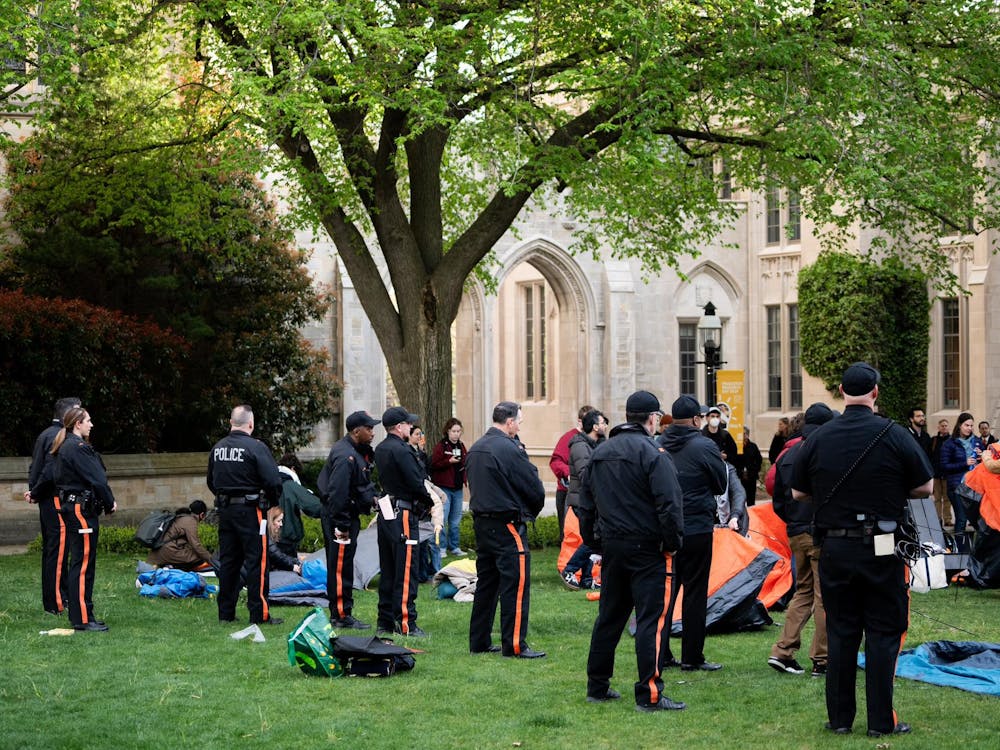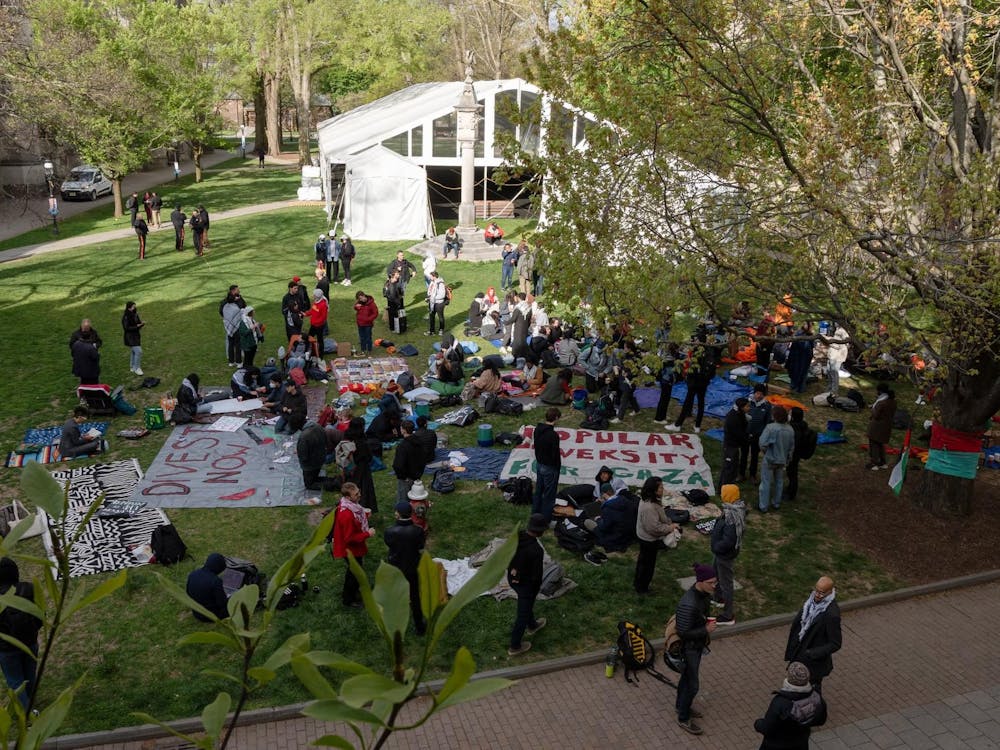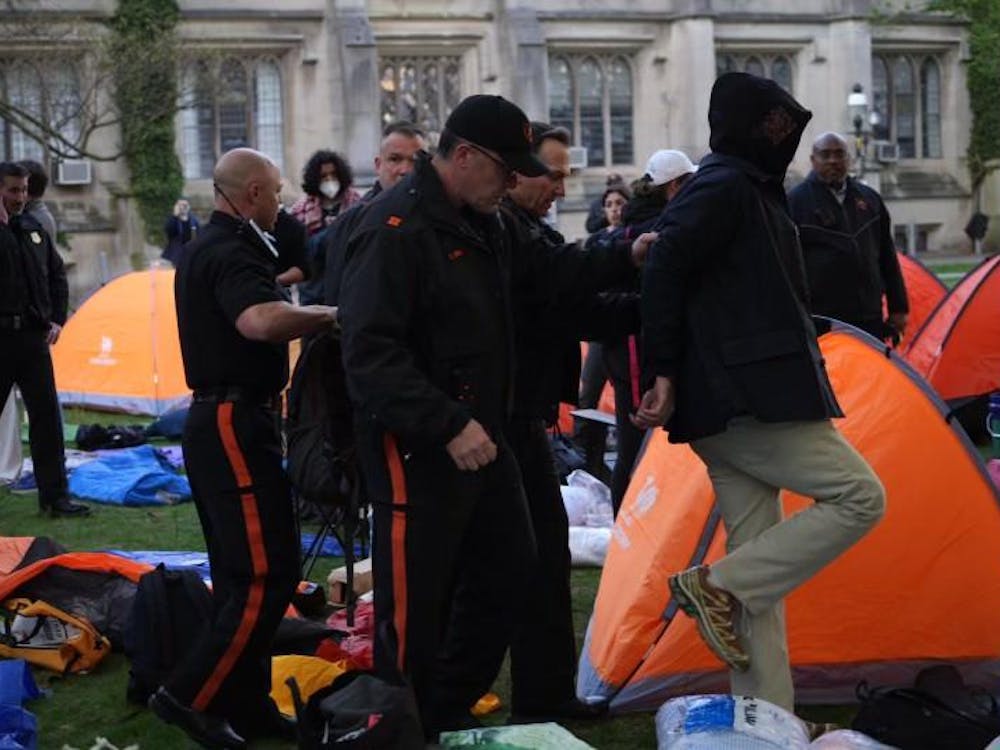The most sustainable structures that stand with us today “naturally encourage” sustainable behaviors within its occupants, director of the Office of Sustainability Dr. Shana Weber said. Her class, ENV 327: Investigating an Ethos of Sustainability, provides a nexus between the ethics of an ecologically friendly environment and the application of proposed solutions to campus-wide sustainability challenges.
“There has been a huge evolution in the way campus as a community perceives itself in the past ten years,” Weber said. The University and the Office of Sustainability have taken measures to be more sustainable, such as installing water refilling stations adorned on building walls, placing vast numbers of recycling and composting bins around campus, and implementing campus co-generators which use dissipated heat to power the university. Students in ENV 327 also take active part in “tackling some of the tougher questions on sustainability on campus.”
It is Weber’s goal is to bring her student’s imagination to fruition.
What originally started out as an office meeting between Weber and three students, Misha Semenov ’15, Hannah Kraus '17, and Jenna Spitzer ’17, ended as a course investigating the ways in which the process of ethical framework and community identity help shape the continual work on campus sustainability. ENV 327 focuses on these ethics, but takes an applied approach through student-made ideas and written proposals to improve sustainability on campus.
“My idea was about the design of buildings, and how that can foster sustainable behavior,” Alie Fordyce '19 said. She used natural woods and lighting in her proposal, after investigating research on worker productivity in various environments, and worked that research into an architectural framework which would inspire more sustainable behavior in occupant spaces.
“It’s about starting at the roots, creating buildings to be sustainable, and fostering sustainable behavior,” she added.
“How do you think about architectural design as something that is a catalyst for sustainable behavior?” Weber posed. “The most sustainable buildings have been built encourage certain behaviors,” she said. For example, faculty from different disciplines are encouraged to meet each other in the hallway, and talk, Weber said.
“One might actually design a building with that objective in mind,” Weber said. "How things are organized, where offices are located, where the public spaces are, where the coffee machine is, these simple things all play a part in 'how you want human beings to actually interact'.”
David Kim ’19, on the other hand, focused on waste and proper trash collection and how to change the culture around sustainable waste management.
“I remember at one point during a 14-hour flight, how much plastic trash I had generated –– there was just so much waste,” Kim said, which compelled him to think about ways to reduce this waste.
“I tried to extrapolate that to the whole plane, to all planes in the air, to a country, to the whole world –– I could not wrap my head around how much trash people around the world must make," he said.
Students in Weber’s class tackled questions on how changing the culture of sustainability can positively affect the response of individual behavior for their own sustainable purposes.

Sam Rob ’18 looked into differences between student residential college and eating club sustainability. What he found was that recent pushes for residential dining hall sustainability have greatly increased, and he wondered whether there was a similar push within the eating clubs.
“Thinking about what are the recommendations that are fruitful now,” Weber said, “would start pointing us in the desired direction that is defined as a student.”
Carrying over the habits built as underclassmen into the eating clubs may be one solution.
Difficulties lay in conceiving proper and ethical implementations for sustainability. Applying feasible ideas and having an attitude that “everyone can make a difference” became necessary for successful proposals, Fordyce said. For Kim, finding the right kind of support for his recommendations became challenging.
“In a way, that revealed that there was more research to be done in these areas,” Kim said.
“There will always be questions that need additional attention,” said Weber. University efforts to expand student enrollment, faculty membership, and overall sustainability all fall within the University's strategic plan, a 30-year guideline on the future status of the university. To implement these large-scale plans, a campus plan which focuses on actual implementation logistics is needed, which is what Weber's class focuses on.
“It’s incredibly interesting to study the global status quo and how Princeton compares to it,” Kim said. "Both require an extraordinary sense of orientation to the community identity, as Weber’s class does. It is exciting to see the interdisciplinary work involved in solving sustainability issues on campus."
There’s a sense of wonderful collaboration that’s “starting to infiltrate every area of study,” Fordyce said, “which is adding to this new stir of sustainability.”








